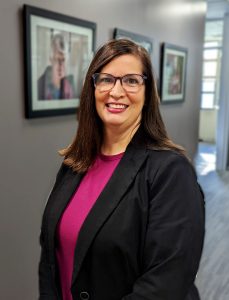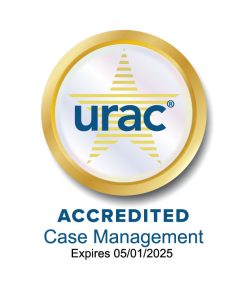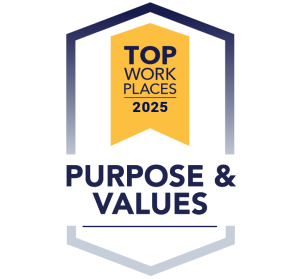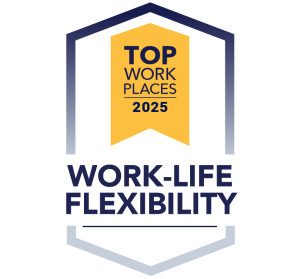February 28th is recognized globally as Rare Disease Day. With nearly 7,000 known diseases worldwide, many without treatment and over 300 million people worldwide living with rare diseases, Rare Disease Day plays a critical role in helping to raise awareness among policymakers and the public about rare diseases and their impact on people’s lives.
MarylandRARE.org reports that there are “roughly three quarters of a million Marylanders living with a rare disease, half of whom are children.” Fortunately, there are resources to support Marylanders’ health and wellbeing, such as the Rare and Case Management (REM) Program, which provides community-based care coordination services for people with specialized health care needs, providing access to high quality, medically appropriate health care services in a cost-effective setting outside of a managed care organization.
We recently sat down with Celinda Carr LCSW-C, CCM , Director, REM Program to learn more.
 What qualifies a disease as “rare”?
What qualifies a disease as “rare”?
For a disease to be considered rare according to the FDA, “a disease or condition must affect less than 200,000 people in the United States.” There are over 300 diagnoses that qualify for the Rare and Expensive Case Management (REM) Program, Maryland’s, case managed, fee for service alternative to HealthChoice Managed Care Organization (MCO) participation, which was established in 1997 by the Maryland Department of Health. What may be surprising to learn is that not all REM diagnoses are rare, however they are all expensive to treat. For many qualifying diagnoses, treatments can help, but often they are conditions that cannot be cured.
What services are provided through the REM Program?
“The Coordinating Center provides care coordination services for the REM Program. The main goal of the REM case manager is to help the recipient reach their highest level of functioning capability. This is done through care coordination, home visits and a variety of other case management services (e.g., assessment of client needs; client/caregiver education; caregiver support services; development of treatment plan; coordination of provider services; and follow-up of client’s progress). In addition to care coordination, participating individuals are eligible to receive all Medicaid covered services, as well as optional services, which may require preauthorization. Basic services under the state plan include medically necessary: physician visits, inpatient hospital services, pharmacy, home health services, radiology and lab services, durable medical equipment, disposable medical supplies, therapies (physical/occupational/ speech/language) and assistive technology. Optional services may include medically necessary: private duty nursing and nursing assistance, nutritional supplements, and dental care.”
How does one qualify for the REM Program?
“To qualify for the REM Program applicants must be eligible for Maryland Medical Assistance (Medicaid) and must have a REM qualifying diagnosis, which are listed on the REM Intake Referral Form. Individuals may not be eligible for the REM program if they already have Medicare. The vast majority of people supported by our Clinical Care Coordinators (licensed social workers and registered nurses) have genetic disorders, neurological conditions, metabolic conditions, lung conditions, developmental disabilities, physical disabilities, and/or chronic diseases. Often, it is difficult for them to live independently without connection to the proper resources, consistent medical follow-up and community supports. The top five diagnosis we see annually are Cerebral Palsy (Diplegic and Quadriplegic), Microcephaly, Quadriplegia, Hydrocephalus and Cleft Palate and Spina Bifida (which are tied).”
How long can an individual receive REM services?
“We provide care coordination for individuals as young as newborns through age 64. Each REM qualifying diagnosis has age out criteria associated with it. Some diagnoses age out at age 12, many at age 21, and still others at age 65. There is no cap on the number of participants who can be enrolled in the program. This past year, we served 4,477 participants (74% were under the age of 21), which is the highest number of participants in the history of the REM program! We provide services for clients in all counties across the state of Maryland, but we see the highest concentrations of clients in Prince George’s, Montgomery, Howard, and Baltimore City and County.”
Can you be on a Medicaid Waiver and the REM Program?
“Yes! An individual can be enrolled in the REM Program and some Medicaid Waivers or Medicaid Programs; however, you cannot be on two Medicaid Waivers at one time. So, for example you could be enrolled in the REM Program and the Autism Waiver, but you couldn’t enroll in another Medicaid Waiver at the same time. You could however be enrolled in two Medicaid programs, for example the REM Program and the Community First Choice Program. We have REM participants who are on a variety of Medicaid Waivers (e.g., Autism Waiver, Home and Community-Based Options Waiver, DDA Waivers – Family Supports, Community Supports, Community Pathways).
Can you enroll in the Model Waiver program while you are enrolled in the REM program?
“No. To be eligible for Model Waiver you must not be eligible for any other Medicaid funded programs.” Visit our website to learn more about the Model Waiver program.
How did the program respond to the transition to virtual after COVID?
“Our Clinical Care Coordinators have always checked-in with our clients every month to assess their wellbeing and assist with any issues that arise. Face-to-face visits in the community are also a requirement for all REM participants. These visits occur at varying intervals – with some receiving visits every three months and others every six months or annually. When the pandemic hit, our monthly contacts never changed, but we had to create a new plan to substitute for face-to-face visits. Our REM clients are among the many Marylanders who are medically complex and thus at high risk for COVID infection. We quickly made a plan to utilize our modern technology and visit virtually with clients. Many of our clients were not familiar with the virtual platforms used by The Center, but the Federal government relaxed some HIPAA guidelines which allowed common applications, such as FaceTime or WhatsApp to reach clients. As a result, I am proud to say that we have been able to connect virtually with 98% of our clients during the public health emergency related to COVID. As the public health emergency winds down, we are once again beginning to connect face-to-face with our clients.”
What is your favorite part about the program?
“Most of our REM Clinical Care Coordinators will tell you that face-to-face interactions with clients are their favorite part of the program because there is no substitute for being in person with someone, being able to engage and build a rapport. As the Director, the impact that I see the coordinators making in the lives of our clients and caregivers, is awe inspiring. We have countless examples of life-changing events – a parent who can return to work because we were able to demonstrate the need for a private duty nurse to care for their child during the day, a child who becomes independent at home and school when they receive a piece of durable medical equipment that we helped to facilitate.”
Can you tell us a little bit about yourself and why you chose to work The Coordinating Center?
“I knew from a young age that I wanted to be in the health care field. I volunteered as a Candy Striper for my local hospital while in my teenage years. In college, I learned about the field of Social Work and the role a Social Worker can have in the medical field. I attended the University of Maryland Baltimore, graduated with my Master’s of Social Work and quickly began working in hospitals. I have been a Certified Case Manager (CCM) since 1995 (the CCM credential began in 1993). I give kudos to my supervisor way back then for being a visionary and telling me how important this certification would become.”
“Around 2010 I had a patient in the hospital who required a ventilator and whose family desperately wanted to care for her at home. It was then that I learned about the REM program and the work of The Coordinating Center. Ultimately this young woman discharged home and was enrolled in the program. That event was the catalyst that led me to The Coordinating Center. It made me curious about what happens post-discharge. I knew that I wanted to be a part of clients’ continued success in the community. I have been with The Coordinating Center for over 10 years now, started as a Clinical Care Coordinator, and transitioned to the REM Program Director in 2019.”
Can you tell us a little bit about your position at The Coordinating Center?
“As Program Director, I provide oversight of the REM Program, ensuring that all 4000+ REM clients are receiving appropriate care coordination services; however, it is our Clinical Care Coordinators, Team Managers, and Associates who are the glue. They make sure that all individuals we support have access to high quality, medically appropriate health care services and community-based services and are the ones who advocate daily for their wellbeing. I am inspired each and every day when I see their hard work. I know we are making an invaluable difference in the lives or our clients and their caregivers. I see it, I hear it, and I feel it!”







